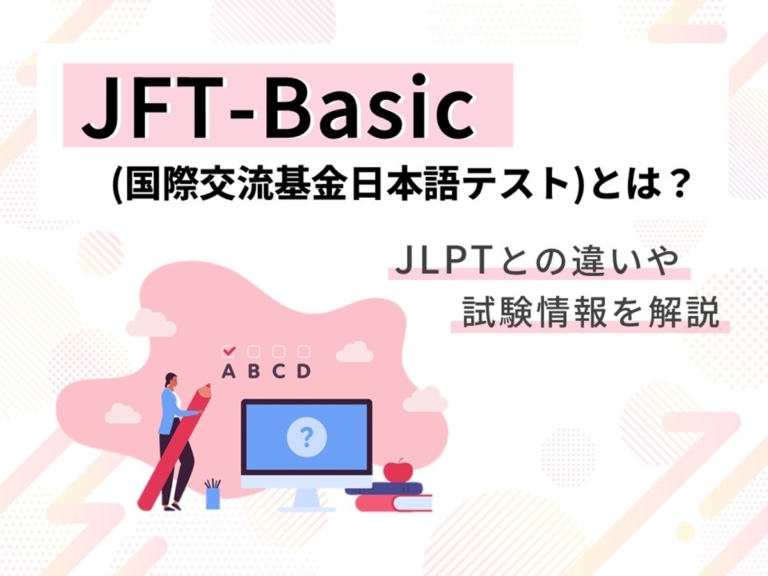
ID
|
EN
Work in Japan
Study Trip
Accommodation

Medan, Indonesia
Head Office
Nakamura Study Japan
Jl. Veteran No.128, Kec. Medan Tim., Kota Medan,
+62 815-600-6060
Jakarta, Indonesia
Operational Office
Nakamura Study Japan
Jl. Quantum Raya,No.9 B, Curug Sangereng, Kec. Klp. Dua,
Gading Serpong, Kabupaten Tangerang, Banten 15810
+62 815-600-6060
Tokyo, Japan
Representative Office
Shibuya Dogenzaka Tokyu Building 2F-C
1-10-8 Dogenzaka, Shibuya-ku, Tokyo, 1500043
katherine@nakamurastudyjapan.com
Close X

If you're preparing to move to Japan for study or work, you’ve probably come across two major Japanese language tests: JLPT (Japanese Language Proficiency Test) and JFT-Basic (Japan Foundation Test for Basic Japanese). While both tests measure your Japanese skills, they serve different purposes and are structured quite differently.
Let’s go through the details step by step 👇
1. Purpose and Use
JLPT (Japanese Language Proficiency Test)
JLPT is internationally recognized and often required for university admission, scholarships, or jobs that demand formal Japanese language skills. Many companies and schools in Japan ask for JLPT certificates—especially level N2 or N1—as proof of your ability.
JFT-Basic (Japan Foundation Test for Basic Japanese)
JFT-Basic is mainly designed for those who want to work in Japan under the Tokutei Ginou (Specified Skilled Worker) visa program. It focuses on basic, practical Japanese for everyday life and general workplace situations.
👉 So, if your goal is to study or work in a professional field in Japan, JLPT might be the better fit. But if you’re aiming to work under the Tokutei Ginou system, JFT-Basic is what you need.
2. Test Structure and Levels
JLPT has 5 levels:
N5 (beginner) to N1 (advanced)
Covers vocabulary, grammar, reading, and listening
No speaking or writing section
JFT-Basic has one level, equivalent to CEFR A2
Includes daily conversation, short reading passages, and basic situational understanding
Conducted via computer-based testing (CBT), with a mix of text, images, and audio
🎧 JFT-Basic feels more interactive due to its visual and audio components—great for learners who prefer practical, real-life scenarios.
3. Test Schedule and Availability
JLPT is held twice a year—in July and December
Conducted simultaneously in many countries, including Indonesia
JFT-Basic is available multiple times a year, depending on the test center
This gives more flexibility if you need a certificate quickly
🗓️ If you’re on a tight schedule for visa processing, JFT-Basic may be a faster option.
4. Certificate Validity
JLPT certificates never expire—you can use them for life
JFT-Basic certificates are valid for 2 years, mainly for Tokutei Ginou visa application
📝 If you're looking for a long-term certification useful in various contexts, JLPT might be the better choice.
Each test has its strengths, so it's important to think about your goals. Do you want to study in Japan or work in a professional job? Go for JLPT. Planning to work under the Specified Skilled Worker program? Choose JFT-Basic
Remember, passing a language test isn’t just about getting a certificate—it’s about preparing yourself for real life in Japan, both linguistically and culturally.
Take your time, study well, and choose the path that suits your goals best. Good luck on your Japanese journey!